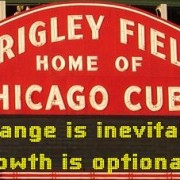Transparency in Leadership
Increasingly, people in all areas of society are seeking transparency in leadership. We want to know the “why,” “how,” and “who” of decision-making, especially when those decisions affect us. Furthermore, we want to trust that decision makers are taking our interests into account when arriving at decisions.
The desire for transparency is so strong that many leaders may feel pressure to vet, check, and double-check every decision with every stakeholder. Of course, this is impractical, if not impossible.
We know that there are some decisions that can be made with little input, and others that require extensive discussions and long consideration. However, as is often the case, it’s the area in between those extremes that can create problems. This is where leaders must practice transparency in order to maintain the trust of stakeholders.
Leadership Transparency in the Workplace
Suppose the executive leadership of an organization decides that it is necessary to reduce work hours for its employees. The leadership group has not spoken about this to managers outside of the group, and they anticipate that this change will be a surprise to everyone. Still, the leaders believe that it’s better to implement this decision sooner rather than later.
A Top-down Decision
No matter how the news is communicated, the decision will not be popular with employees. So rather than beat around the bush, one lucky member of the leadership group is asked to simply communicate the decision. This spokesperson for the leadership group anticipates the following questions:
- Why are we reducing hours?
- How was this decision made?
- Who was involved in the decision?
So the leader provides the answers to these questions in her announcement, and she is hopeful that the employees will be understanding and take the bad news in stride. Unfortunately, that is not the case.
Blindsided
Managers outside of the decision making process immediately began receiving questions and complaints regarding the reduction in hours. They had no good answers for the employees. This greatly damaged trust and respect between the managers and their reports.
The managers resented leadership for making such a quick decision without their input. They felt blindsided and unfairly set up to fail in managing their teams. Just like the other employees, they lost trust and respect for the executive leadership team.
Very soon, news reaches the leadership group that employee morale is tanking. What happened?
Part-time Transparency
Although the leader built understanding around the context of the decision in her announcement, the managers and other employees felt almost tricked by the sudden reduction in hours. The leadership failed to communicate any information beforehand that would have led the employees to anticipate this change. For many employees, the news was bad, but the sudden announcement and surprise were worse.
Transparency in leadership cannot be part-time, and it cannot only accompany official announcements or appear on the backend of an important decision. It must be proactive, constant, and sincere. It must be part of an organization’s culture.
A Culture of Transparency
A strong, positive organizational culture will not often materialize without the presence of effective leadership. Leaders create a compelling mission and vision, and then determine the organizational values that will advance both. Taken together, these are the foundational elements of organizational culture.
An organization can profess to hold numerous values, but successful ones will whittle these down to 4 or 6 values. The result is a set of core values that inform workplace behaviors. An organization that wants to embrace transparency in leadership, then, must ensure that its core values encourage this behavior.
The behavior of transparency in leadership can be described in many ways, but a helpful description would be: the timely, frequent sharing of information and the invitation to provide feedback or enter discussion in regard to this information.
Timely and Frequent Sharing
As previously mentioned, transparency in leadership is not seeking and considering input on every decision, and it is not sharing every piece of information on every decision. The right frequency of sharing information, then, is a frequency which ensures that employees are kept aware of:
- the status of ongoing issues, and
- the possibility of emerging issues.
This can be thought of as simply “keeping people in the loop.”
Timely sharing of information is seeking to achieve the above, while also considering whether there is a need to know the information at a particular time. For example, interrupting work on a time-sensitive project to hold a meeting where the topic is a new snack program….that is not timely sharing.
Feedback and Discussion
Of course, simply sharing information is not enough to create transparency in leadership. A one-way street of top-down sharing would cause most employees to feel as if they were only receiving a long list of dictates and decrees. An organization that values transparency must go further and give every employee the ability to influence decisions by seeking their feedback.
Feedback can be collected through surveys, but individual or small-group discussions are often the most effective vehicle. This provides an opportunity for all parties to gain clarity in understanding. Additionally, discussions often uncover new perspectives that the decision makers may not have considered previously.
While seeking feedback is important, leaders must also convey sincerity in seeking feedback. Employees must feel that their thoughts and perspectives will be taken into consideration by decision makers, and they must see evidence of this when decisions are announced. Few things hurt employee morale more than the constant request for feedback that is never considered.
Transparency Mitigates Conflict
The leadership group in our workplace scenario created conflict when making the announcement to reduce hours. Specifically, the conflict was between the employees anticipating a certain amount of hours and the leadership’s decision to reduce hours. From the organization’s perspective, the conflict was unavoidable; however, an organization that values transparency understands that while a conflict may be necessary, it doesn’t have to be damaging.
A damaging conflict is most likely to occur when there is unequal access to information that, when revealed, moves one party to resent the other. Transparency in leadership, then, prevents damaging conflicts by ensuring that all employees have access to important information at the right time.








